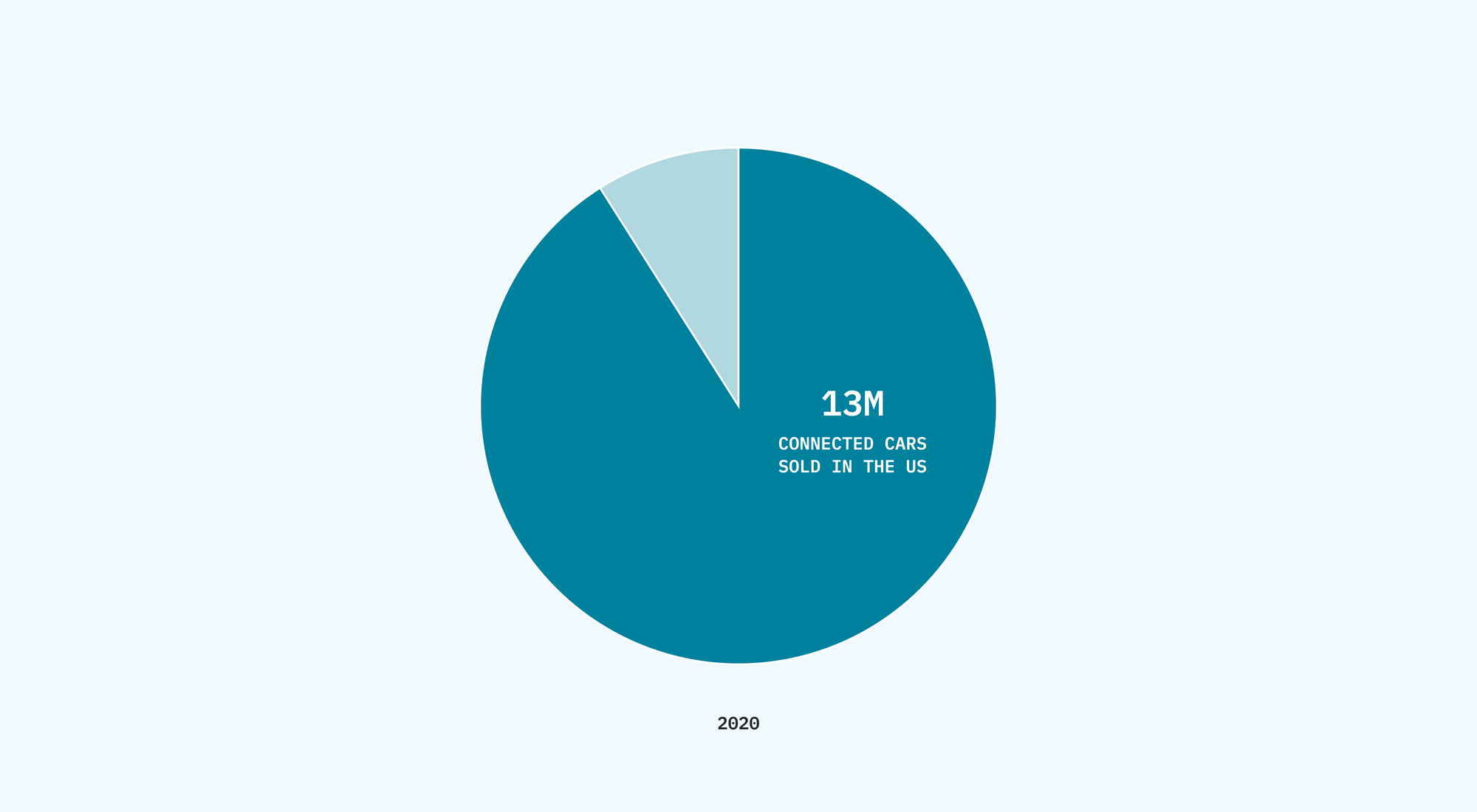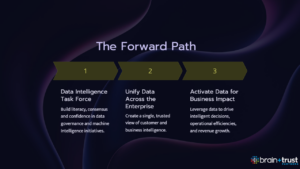With urban areas struggling with traffic congestion, AI solutions have emerged in accessing real-time information from vehicles for traffic management, and utilizing mobility on demand in trip planning through a single user interface.
In our previous infrastructure post, we explored some of the potential AI has to create an intelligent transportation infrastructure that enhances individual safety, reduces traffic congestion, and generally makes moving people and things throughout the built environment more efficient. As we explore ideas like smart cities and AI-powered infrastructures, however, critical concerns arise: how can we gather and safeguard the enormous amount of data required for this transformation while respecting and prioritizing the sovereignty of the individual’s data?
Solving the Data Puzzle

Data is the heart and soul of the AI-driven transformation of transportation. Imagine this data as tiny puzzle pieces that, when put together, create a clear picture of our traffic landscape. These puzzle pieces come from various sources:
- Vehicles: Modern cars and trucks are already equipped with sensors that can help AIs predict traffic flow and identify potential congestion points by collecting information about speed, location, and even driver behavior to an extent that baffles industry outsiders. “The United States had the largest percentage of connected vehicles sold in 2020,” writes SmartCar’s Charlotte Kosche. “Of all passenger cars sold, around 91% were connected. That’s over 13 million connected vehicles sold in the US alone (in 2020).”
- Buildings and Infrastructure: Smart city initiatives involve embedding sensors in roads, traffic lights, and infrastructure to monitor real-time conditions. This allows AI to adapt traffic signals based on actual traffic, minimizing wait times and reducing idling.
- Mobile Devices: Our smartphones emit signals that provide insight into pedestrian movement, helping AI make safer decisions for drivers, passengers, pedestrians, and cyclists — basically anyone who lives, works, or plays on our cities’ streets and sidewalks.
Guarding the Treasure Trove
While the potential benefits of applying the power of AI to streamline our transportation needs are indisputable, data privacy and the right of the individual to opt out of data collection remain paramount. Their data is incredibly valuable — and, like a precious gem, it must be protected. Here’s how:
- Anonymization: The data stream is stripped of Personally Identifiable Information (PII) before it’s used. This way, AI works with data in a form that can’t be easily traced back to specific individuals.
- Encryption: Data, even after being stripped of PII, is encrypted during transmission and storage, making it virtually unreadable to unauthorized parties.
- Consent and Transparency: Users are informed about data collection practices, and their consent is obtained before any data is used. Think of it as giving someone the keys to your treasure chest only after explaining what’s inside.
- Access Limitation: Only authorized, vetted individuals would have access — and only to information that’s relevant to the work they’re expected to do. City planners, police departments, and civil engineers would have access to some the data, but not all the data, thereby reducing the risk of its misuse.
AI For Privacy + Progress
The best part of this is that, while the massive amounts of data being gathered and analyzed makes keeping it private and secure a monumental task, we’re not in it alone. The same AI technology that will help streamline our transportation networks and local infrastructures can also help keep that data safe. In addition to some of the built-in safeguards we discussed above, AI can add:
- Data Minimization: AI only uses the minimum amount of data required to achieve its goals. This means less personal information is processed, reducing privacy risks.
- Local Processing: A growing number of AI solutions offer the ability to process data locally, on individual devices or within specific geographic areas and (crucially) without sending sensitive data to a central or cloud-based server, minimizing the threat of potential interception.
- Differential Privacy: This technique adds a bit of noise to the data, making it harder to link specific data points to individuals.
- Constant Learning: AI continuously learns and adapts, which means it can improve its predictions over time without needing to access sensitive individual data.
The future of intelligent infrastructure is undeniably exciting, and the potential to work with artificial intelligence to develop safer roads, reduce congestion, and provide a healthier environment for future generations is inspiring — but this journey will take place on a high wire, balancing the needs of progress and privacy. By anonymizing, encrypting, and securing data while leveraging AI’s unique capabilities, we can embrace a transportation revolution that doesn’t compromise our personal privacy.
ORIGINAL CONTENT FROM BRAIN+TRUST
Co-authored by Jo Borrás & Open AI’s ChatGPT







